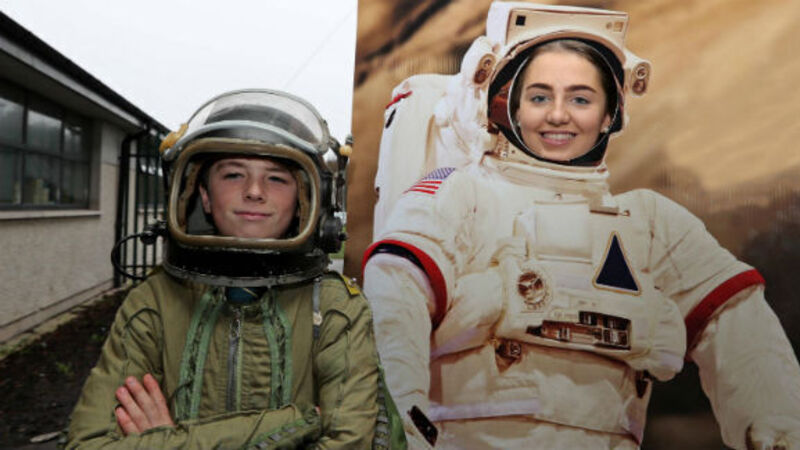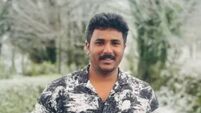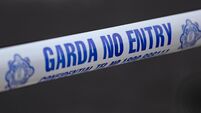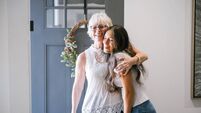Students’ space odyssey as astronaut makes contact

More than 700 pupils sat silently in the darkened school hall, walls lined with an overspill of observers and some students holding aloft signs that read “Quiet”.
They all stared intently at the lit stage as Séamus McCague, national co-ordinator for the amateur radio on the International Space Station (ARISS) programme, repeated the salutation a number of times to the station floating some 400km overhead.
All in attendance observed the signs’ request — McCague’s voice through the speakers was punctuated only by the sound of static.
Eventually, a sound from space replied: “Welcome aboard the International Space Station, I’m ready for the first question, over.”
Glanmire Community College in Cork had successfully made contact with Nasa astronaut Joe Acaba, who was travelling through space at 27,600km/h south-west from the New York horizon towards Italy and Poland.

For a short window, the station was directly over Cork, allowing it to make a line-of-sight contact with the secondary school, which had applied for the chance to speak with the ISS as part of the highly competitive ARISS programme.
In an international collaboration, Acaba’s audience stretched beyond the walls of the school hall, as Glanmire Community College bounced its signal off a different satellite to another school: Calistrat Hogas in Piatra-Neamt, Romania.
For 10 minutes or so, pupils in Romania and Ireland took it in turns to ask Acaba questions about life on the ISS: Does hair grow faster in space? How do astronauts sleep when they are floating? If, as has been reported, an astronaut’s sense of taste changes on the ISS, does Acaba think he could eat the world’s hottest chilli while on board?
As students stood to take their turns at the mic, a long table with laptops and other equipment loomed behind them — not unlike a Nasa control centre desk.
From here the signal to the ISS and Romania was monitored and maintained. By happy coincidence, Ana Cruceanu, a fifth-year Glanmire student, is also a Romanian native and was able to keep communications with Calistrat Hogas running smoothly.
The sense of elation among the staff and students was palpable after transmission ended, followed by a student performance of Coldplay’s ‘A Sky Full of Stars’.

“It was fantastic,” said sixth-year student Fergal Buckley.
“It was nerve-wracking leading up to it, but when you hear his voice coming back it is such a huge rush of relief. We’ve practised the whole thing from top to bottom over the last three days, running and racing, making sure nothing was going to go wrong and that was probably the best run we ever did, it was perfect,” he said.
“Hearing him answer the question about whether micro-organisms are affected by the lack of gravity up there was really interesting for me, because that would be something I’d consider studying in the future,” he said.
Ruth Whelan from fifth year was equally elated.
“We’re absolutely buzzing after it, it went better than any of us could ever have expected. It was just perfect,” she said, after she asked about the use of augmented reality and the tricky issue of sleeping in space.
“From a really young age I had such an interest in space, it’s crazy to be here today talking to an astronaut, it has been my dream since I was five or six,” she said, adding that she would consider a career in science.
“I’m only in fifth year, but I am studying applied maths and physics and I really do enjoy them. After seeing this today it gives you an insight as to what is possible if you work hard, and where you can go,” she said.
Dan O’Sullivan is the science teacher who first applied — with the help of Blackrock Observatory — to have the school considered for the ARISS programme some two-and-a-half years ago. An initial application was rejected, but last January the school was told it was accepted, and 10 months of work followed.
“Normally when you are doing these contacts, you’re hoping for 12, 13 questions. To get through all our 20 with perfect audio was really a testament to the work done,” said Mr O’Sullivan, adding that the approach to the event was student-led.
The packed auditorium absorbed the sounds and eliminated the echo suffered in the empty hall during rehearsals earlier in the week.
“You don’t know if it’s going to work, and I would have to be the first one out of town if it didn’t, so it’s a huge relief and for it to go so well really is just the cherry on the top.”












